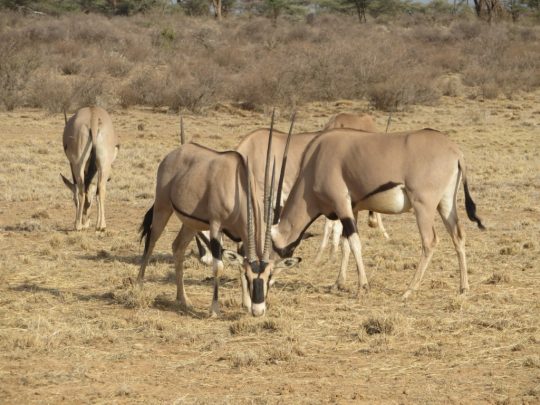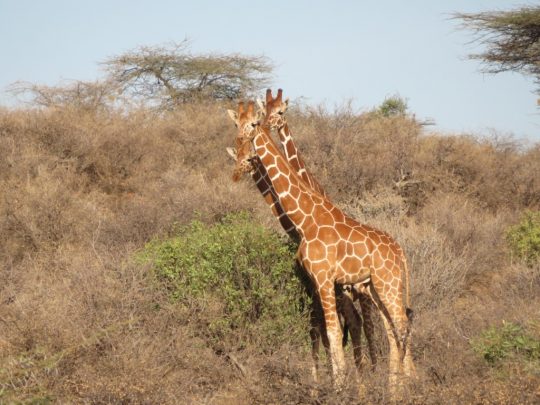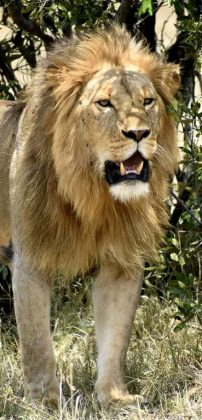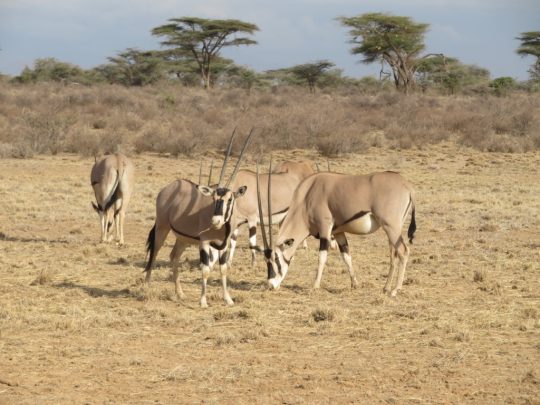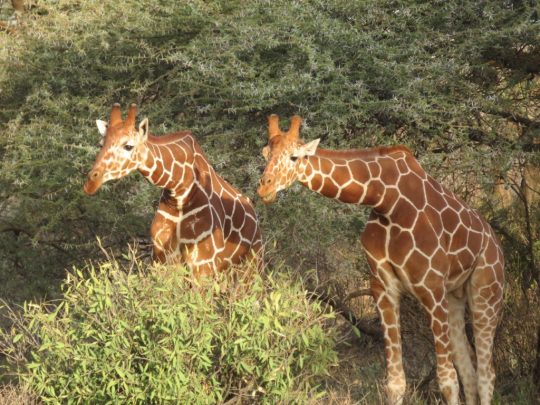Are you thinking to go visit Samburu?
Talk to our experts about the perfect planning for your holiday.
Error: Contact form not found.
- About Samburu
- Interesting facts about Samburu
- Best Time to Visit Samburu
- Things to see in Samburu
- How to get to Samburu
- Where to Stay in Samburu
- Weather & Climate
The Samburu National Reserve is situated along the banks of the Ewaso Ng’iro river in Kenya, serving as a game reserve. Adjacent to it, on the opposite side of the river, lies the Buffalo Springs National Reserve.
About Kenya
Kenya is a country located on the eastern coast of the African continent. With a varied geography and much of northeastern bush-covered plains, the rest of the country consist of pristine beaches, scenic highlands and lake regions, a good portion of the Great Rift Valley, and the magnificent Mount Kenya. Kenya is one of the finest, and possibly the most famous safari destination in the world. But safari by no means the only reason to visit Kenya, for the attractions of its rich culture and diverse environments are considerable.
About Samburu National Reserve
Samburu National Reserve is situated in the north of Kenya, where the savannah starts giving way to arid scrubland, kopjes and immense rocky outcrops, spreading around the Ewaso Ngiro River. This is very exciting wildlife area, with extraordinary landscape supporting animals specifically adapted to the drier, rockier environment.
The reserve is named after the Samburu people, a nomadic pastoralists whose traditional finery is among the most beautiful and delicate in the world. The Samburu still live in manyattas (villages) that can be moved to follow fresh grazing for their donkeys, goats and cattle. Camels where introduced during some point when trading Arabians arrived and, of course, these desert creatures thrive in this semi-desert environment. This is one of the few places in Africa where you can undertake a camel trek: set off to find wildlife, led by your capable and knowledgeable Samburu guides.
If you liked Samburu National Reserve, you might also like Ol Pejeta Conservancy – Kenya.
If you liked Samburu National Reserve, please follow us on Instagram for more content like this.
Samburu – Interesting Facts
- One of Kenya’s smallest, but richest, wildlife national parks
- Home to the big cats; lion, leopard and cheetah
- Healthy breeding packs of endangered African wild dog
- Likely to see rare northern species, including “Samburu Special Six”
- Birding hotspot with over 450 species recorded
- One of few places in Africa where you can do camel trek
- Walking, mountain bike and camel-back riding safaris
- Visits to local Samburu tribal villages
Best Time to Visit Samburu
Samburu national reserve can be visited all year round but for wildlife watching safaris, the best time to visit the reserve is in the period of June to October and December to March. These periods are dry season and animals are easier to spot as they congregate at water holes.
For bird watching, the best time to visit Samburu national reserve is in the wet season period that is November, April and May, though wet season is best for birding, it is not ideal for wildlife watching as the grass is high.
Wildlife
Samburu national reserve is a great Kenya wildlife viewing destination and a residence to a variety of wildlife species in high densities, animals in Samburu national reserve include the reticulated giraffe, gerenuk, grevy’s zebra, Beisa orys, hippos, elephants, leopards, hyenas among others.
Birdlife
Samburu national reserve is boost over 350 bird species making the reserve a delightful haven for Kenya bird watching safaris, birds found in the reserve include Somali ostrich, Acacia tit, Bare-eyed thrush, African palm swift, Ashy cisticola, Black-bellied sunbird, Black-capped social weaver, Brown-tailed rock chat, Chestnut-headed sparrow lark, Chestnut weaver, Donaldson-Smith’s sparrow-weaver, Fischer’s starling, Golden pipit, Golden-breasted starling, Greater kestrel, Grey wren-warbler, Hunter’s sunbird, Lanner falcon, Mariqua sunbird, Northern brownbul, Palm-nut vulture, Pink-breasted lark, Pygmy batis, Red-bellied parrot, Red-necked falcon, Red-winged lark, Reichenow’s seedeater among others.
How to Get to Samburu
The recommended port of entry, when travelling to the Masai Mara, is Jomo Kenyatta International (NBO) in Nairobi. NBO Airport serves as East Africa’s biggest hub and as a result many convenient flight options are available. KLM Royal Dutch Airlines, Air France, British Airways, Emirates, Etihad Airways, Kenya Airways, Lufthansa, Qatar Airways and Swiss all operate flights from a multitude of major airports around the world. Also many regional flights options (including flights to neighbouring countries and Southern African destinations) are available.
By road/By air
By road it takes around 6 hours driving from Nairobi, but is an interesting and educational way to see the country. By air there are three airstrips that have daily and sometimes twice daily flights from Wilson Airport in Nairobi. The schedule flights also connect well with other game reserves like Lewa Downs, Meru National Park and the Masai Mara making for a great combination safari in Kenya.
Weather & Climate
- January – February: this is the dry spell between the short and long rainy season, with only an incidental rain shower.
- March – May: this is the long rainy season with April being the wettest month. You don’t have to worry about it raining all day long, but it does rain regularly. Safari trails can get a little slippery. Early morning game drives are slightly now with average temperatures of 13 degrees Celsius (55 degrees Fahrenheit).
- June – August: the average daytime temperature is around 25 degrees Celsius (77 degrees Fahrenheit). Nighttime lows are around ten degrees Celsius and (50 degrees Fahrenheit). It’s generally sunny and dry, with only an incidental rain shower.
- September – October: this time of year you can expect occasional rain showers, but it’s mostly dry. Daytime temperatures in October are slightly higher at 27 degrees Celsius (81 degrees Fahrenheit). It can be slightly cooler after rain. Early morning game drives can be chilly at around twelve degrees Celsius (54 degrees Fahrenheit).
- November – December: this is the lighter of the two rainy seasons. Expect short rain showers during these two months. Average afternoon temperatures are approximately 27 degrees Celsius (81 degrees Fahrenheit).
Do you need expert tips on planning for your next safari in Africa?
Share your email here
[mc4wp_form id=”29279″]

